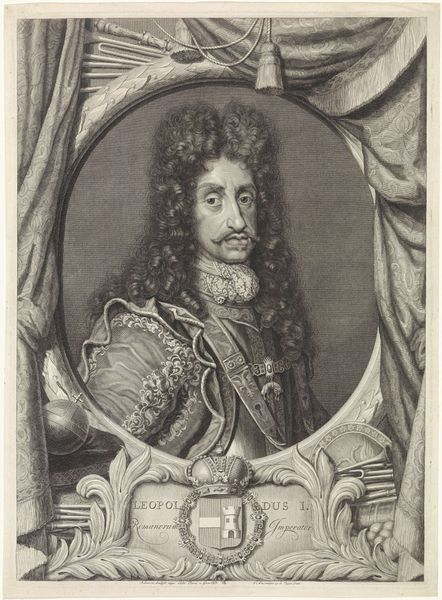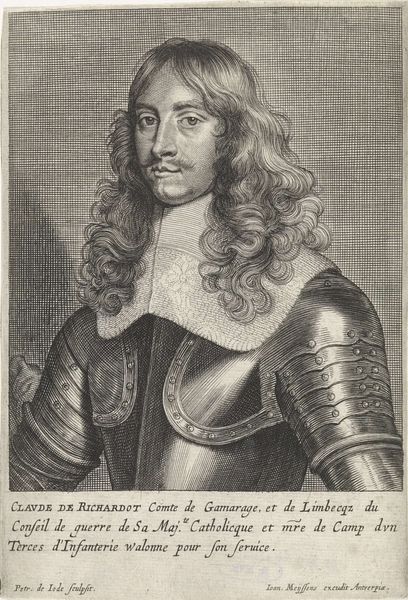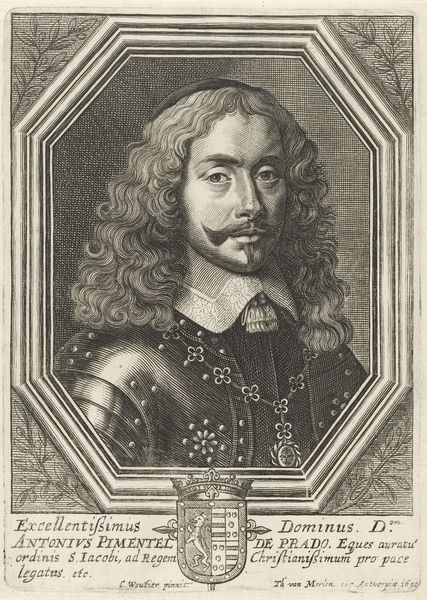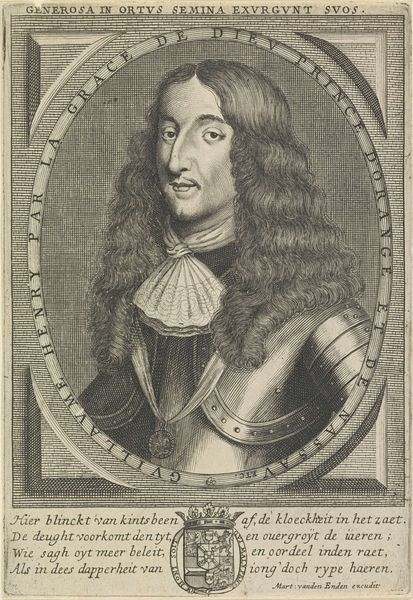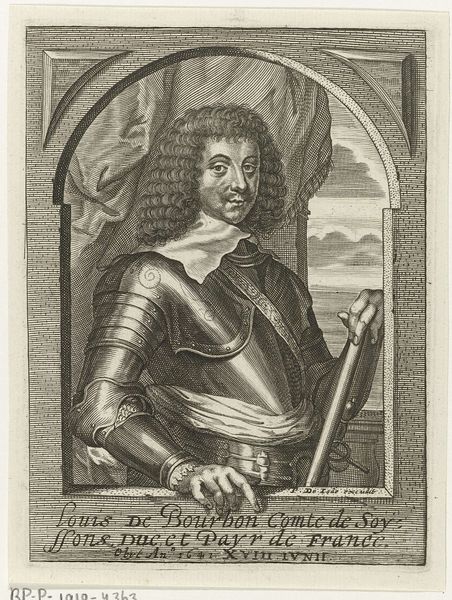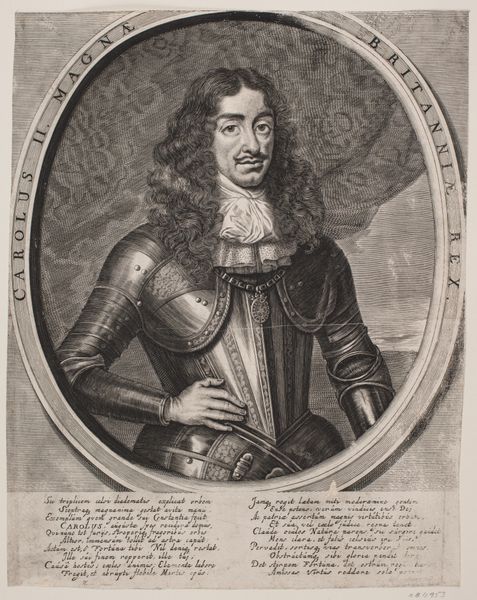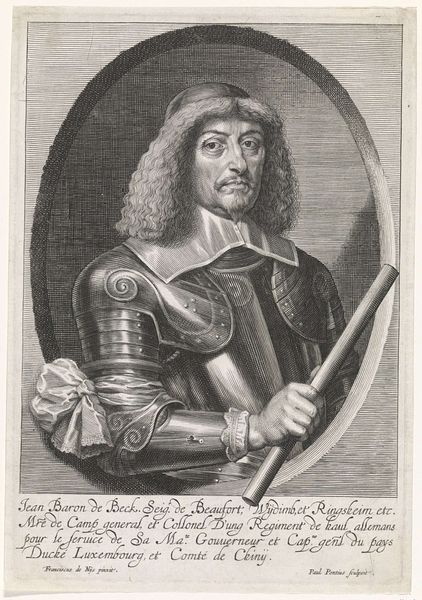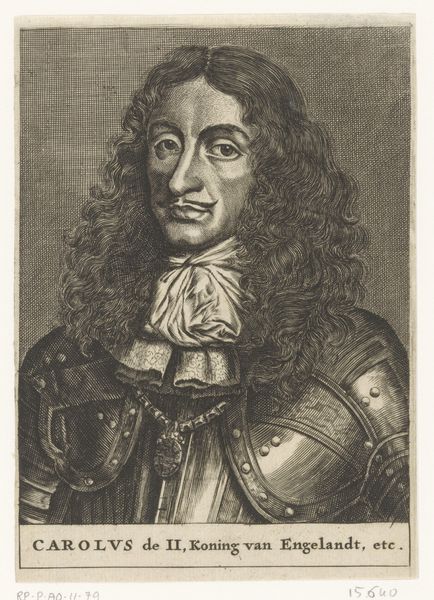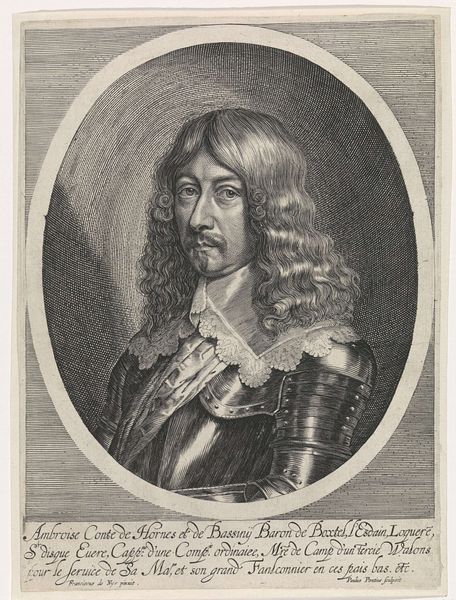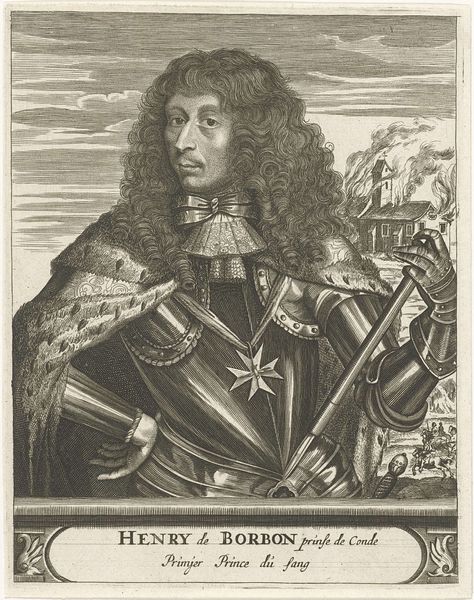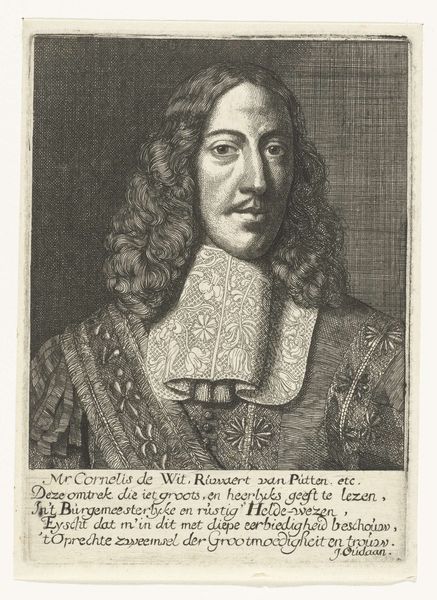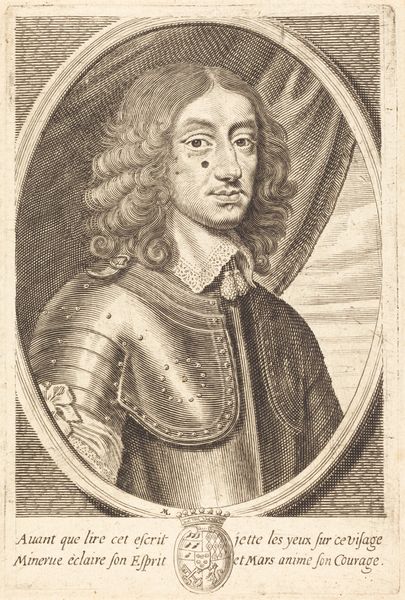
engraving
#
baroque
#
old engraving style
#
portrait drawing
#
history-painting
#
engraving
Dimensions: height 189 mm, width 139 mm
Copyright: Rijks Museum: Open Domain
Curator: Here we have Adriaen Millaert's engraving, "Portret van Francisco de Castel Rodrigo," likely created between 1645 and 1668. Editor: The detail is astounding. It feels meticulously crafted, almost obsessive in the way it captures every fold of fabric, every plate of armor. You can almost feel the texture. Curator: Millaert’s choice of engraving situates this piece firmly within a context of both political power and its visual representation. How do you interpret the use of that medium? Editor: I see the engraving process itself – the labor-intensive cutting, the calculated marks – as highlighting the value placed on representing someone like Castel Rodrigo. Each line is deliberate, reflecting the societal importance ascribed to him, the patron, and perhaps the engraver's own social position. Curator: Absolutely. This work is much more than just an image of a man; it's a constructed portrayal that reflects his social standing as a governor and military figure, especially as indicated by the elaborate inscription below his image and family crest, which further bolsters his identity through lineage. Editor: And look at the armor. It's not just protection, but a crafted, almost theatrical, object. The artistry lies in transforming utilitarian gear into a symbol of power, highlighting the labor of the smiths who created such intricate pieces. How much did that process cost at that time, and what did it mean to the maker? Curator: Indeed. Beyond the military, consider that portraiture during this era served as a tool for negotiating social and political standing. This image could have been disseminated to various courts and noble houses to establish and affirm Castel Rodrigo’s prominence. Gender becomes part of this narrative too. How does this powerful image serve in relation to gender and politics? Editor: It’s fascinating how an artwork like this can be a record of not just a person, but also of social structures, materials, and production processes that often remain unseen. Curator: Exactly. It makes us reconsider how history is created, perceived, and reproduced. Editor: The work certainly encourages us to rethink the layers of material, labor, and social standing represented through a "simple" engraved portrait.
Comments
No comments
Be the first to comment and join the conversation on the ultimate creative platform.
